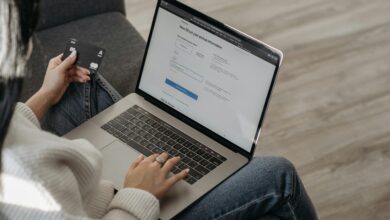12 Smart Money Moves To Make In 2026

Let’s be honest for a second. How many times have you promised yourself you’d get your finances together, only to end up right back where you started? Yeah, I’ve been there too.
But here’s the thing: 2026 is staring us right in the face, and if we don’t make some serious changes now, we’ll be having this exact same conversation next year. And nobody wants that, right?
Look, I’m not here to lecture you about money like some stuffy financial advisor. I’m here to share the smart money moves that actually work because I’ve tested them myself. Some worked brilliantly, others needed tweaking, but all of them taught me something valuable about handling cash.
What makes these moves “smart” anyway? Simple. They’re practical, they’re doable, and they don’t require you to live like a monk or win the lottery.
These are real strategies that real people use to build wealth, reduce stress, and actually enjoy life without constantly worrying about their bank balance.
So grab your coffee (or tea, I don’t judge), get comfortable, and let’s talk about the money moves that’ll transform your 2026 from “meh” to “heck yes!”
What Are Smart Money Moves?
Before we jump into the good stuff, let’s clear something up. Smart money moves aren’t some secret tricks that only wealthy people know about.
They’re simply intentional decisions you make with your money that improve your financial situation over time.
Think of them as the building blocks of your financial house. You wouldn’t build a house without a solid foundation, would you? Same goes for your money. Every smart decision you make today is like laying another brick. Eventually, you’ll look back and realize you’ve built something pretty impressive.
Here’s what I love about smart money moves: they compound. One good decision leads to another, which leads to another, and before you know it, you’re making progress you never thought possible. It’s like a snowball rolling downhill, except this snowball is made of cash. 🙂
Why 2026 Needs to Be Different
If you want different results, you need different actions. Revolutionary concept, I know.
But seriously, take a moment to think about your 2024 finances. Were you happy with how things went? Did you reach the goals you set? Or did life happen, and your money plans went out the window somewhere around March?
The biggest mistake I see people make (and yes, I’ve made it too) is not being honest about their financial mistakes. You can’t fix what you won’t acknowledge. Maybe you overspent on dining out.
Maybe you ignored your credit card debt. Maybe you kept saying you’d start investing “next month.”
Whatever it was, own it. No judgment here. The point is to learn from 2025 so you can absolutely crush it in 2026. And that starts with implementing these smart money moves right now.
12 Smart Money Moves To Make In 2026
Wealthy people who succeed throughout the year practice strategic moves that you probably ignore. If you must thrive financially, you should copy these same secrets that the rich know.
Here are some of the smart money moves to make right now:
1. Earn Extra Income
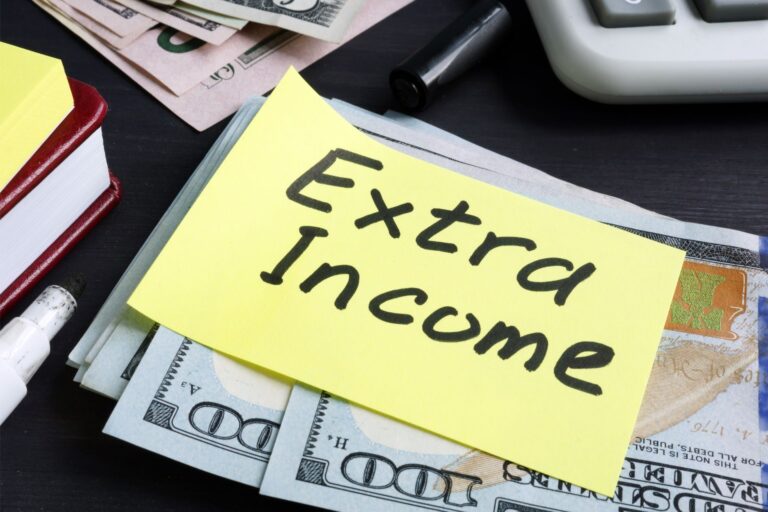
Let me hit you with a truth bomb: you can’t save your way to wealth if you’re barely making ends meet. Sometimes, you need to increase what’s coming in, not just decrease what’s going out.
Now, before you panic and imagine yourself working three jobs and surviving on energy drinks, hear me out. I’m not suggesting you work yourself into the ground. That’s neither smart nor sustainable.
The Passive Income Angle
This is where passive income becomes your best friend. I’m talking about money that flows in while you’re sleeping, watching Netflix, or doing literally anything else.
Got a spare room? List it on Airbnb. Have an RV sitting in your driveway? Rent it out on RVshare. Own dividend-paying stocks? That’s money hitting your account quarterly without you lifting a finger.
Here’s my personal experience: I started renting out my parking space in a busy downtown area. It brings in an extra $200 monthly. That’s $2,400 yearly for doing absolutely nothing. Is it going to make me a millionaire? Nope. But it covers my streaming subscriptions, phone bill, and still leaves money for my savings account.
Side Hustles That Don’t Suck
If you’ve got a skill, monetize it. Seriously. The internet has made it ridiculously easy to turn your talents into cash.
- Freelance writing or design on platforms like Upwork or Fiverr
- Virtual assistance for busy entrepreneurs
- Online tutoring in subjects you’re good at
- Selling digital products like templates or courses
The key is finding something that doesn’t feel like torture. If you hate it, you won’t stick with it, and then it’s just wasted effort.
2. Prioritize Savings

Here’s a mindset shift that changed everything for me: saving isn’t optional. It’s not something you do with “leftover” money. It’s a bill you pay to your future self.
I know, I know. Saving feels impossible when you’ve got rent, groceries, insurance, and a million other expenses. But here’s the thing: if you don’t prioritize it, it’ll never happen. There will always be something else to spend money on.
The “Pay Yourself First” Strategy
This is probably the oldest money advice in the book, but it works. As soon as your paycheck hits your account, move a percentage to savings. Immediately. Before you pay bills, before you buy groceries, before you do anything else.
I personally save 10% of every paycheck, but you don’t need to start there. If 10% feels overwhelming, start with 5%. Even 3% is better than nothing. The amount matters less than the habit.
Let’s do some quick math. Say you bring home $6,500 monthly and save 5%. That’s $325 per month, which becomes $3,900 by year’s end. Not too shabby for money you probably wouldn’t have missed anyway, right?
Automate Everything
Want to know the secret to consistent saving? Make it automatic. Set up an automatic transfer from your checking to your savings account every payday.
Why does this work so well? Because it removes willpower from the equation. You’re not relying on your future self to “remember” to save or to have the discipline to transfer money manually. It just happens, whether you’re thinking about it or not.
Most banks let you set this up in about five minutes through their app or website. Do it today. Seriously, put down this article and do it right now. I’ll wait.
3. Open A High-Yield Savings Account
Pop quiz: what interest rate does your current savings account pay? If you don’t know, that’s already a problem. If you do know and it’s less than 4%, we need to talk.
Traditional savings accounts at big banks typically pay around 0.01% to 0.45% interest. That’s basically nothing. Your money is just sitting there, slowly losing value to inflation while the bank uses it to make themselves richer. Fun times, right?
The High-Yield Alternative
High-yield savings accounts, usually offered by online banks, pay significantly more. We’re talking 4.5% to 5.0% or even higher in some cases. That’s roughly 10 times what traditional banks offer.
Let’s put this in perspective. If you have $10,000 in savings:
- At 0.45% interest, you’ll earn $45 annually
- At 5.0% interest, you’ll earn $500 annually
That’s a $455 difference for doing absolutely nothing except choosing a better bank. It’s literally free money you’re leaving on the table if you’re not using a high-yield account.
Top High-Yield Options to Consider
Here are some solid options worth checking out:
- Marcus by Goldman Sachs – consistently competitive rates with no fees
- Ally Bank – great customer service and user-friendly app
- Discover Online Savings – no monthly fees and easy access
- American Express Personal Savings – reliable with good rates
Opening one takes maybe 15 minutes online. That’s a pretty good return on your time investment, IMO.
4. Max Out Your Retirement Account

I get it. Retirement feels like a million years away, especially if you’re in your 20s or 30s. But here’s the uncomfortable truth: time moves faster than you think, and retirement doesn’t fund itself.
Maxing out your retirement contributions is one of those smart money moves that seems painful now but pays off massively later. And I do mean massively.
Understanding the Contribution Limits
For 2025 (and likely similar for 2026, here’s what you’re working with:
- 401(k) plans: $23,000 annual limit if you’re under 50
- 401(k) catch-up: Additional $7,500 if you’re 50 or older
- IRA accounts: $7,000 annual limit if you’re under 50
- IRA catch-up: $8,000 if you’re 50 or older
Now, can everyone max these out? Honestly, no. And that’s okay. But you should contribute as much as you possibly can, especially if your employer offers matching contributions.
The Employer Match is Free Money
If your employer matches your 401(k) contributions and you’re not taking advantage of it, you’re literally turning down free money. It’s like your boss is trying to hand you cash and you’re just walking away from it.
Most employers match 50% to 100% of your contributions up to a certain percentage of your salary (commonly 3% to 6%). At minimum, contribute enough to get the full match. That’s an immediate 50% to 100% return on your investment. You won’t find that anywhere else.
The Power of Compound Interest
Here’s where things get exciting. Let’s say you’re 30 years old and start contributing $500 monthly to your retirement account. Assuming a 7% average annual return (which is conservative based on historical stock market performance), by age 65 you’d have approximately $930,000.
But if you wait until you’re 40 to start? That same $500 monthly contribution only grows to about $405,000. That 10-year delay costs you over half a million dollars. Yeah, time really is money when it comes to retirement savings.
5. Diversify Your Investment Portfolio
Ever heard the saying “don’t put all your eggs in one basket”? It’s old advice, but it’s old because it works. This is especially true when it comes to investing.
Diversification is basically a fancy word for spreading your money across different types of investments. It’s one of those smart money moves that protects you when markets get crazy (and they always do eventually).
Why Diversification Matters
Imagine you invested everything in tech stocks in 2021. Things were looking pretty great, right? Then 2022 happened, and tech stocks got hammered. If that was your entire portfolio, you probably had some sleepless nights.
But if you had spread your investments across tech, healthcare, real estate, bonds, and maybe some international stocks, the damage would’ve been much less severe. Some parts of your portfolio would’ve gone down, but others would’ve held steady or even gone up.
That’s the beauty of diversification. It smooths out the ride and helps you sleep better at night.
What a Diversified Portfolio Looks Like
A well-diversified portfolio typically includes:
- Domestic stocks – companies based in your home country
- International stocks – companies based in other countries
- Bonds – government and corporate debt that pays interest
- Real estate – either direct property ownership or REITs
- Commodities – things like gold, silver, or oil
- Alternative investments – cryptocurrency, private equity, etc.
The exact mix depends on your age, risk tolerance, and financial goals. Generally, younger investors can handle more risk (more stocks), while older investors should be more conservative (more bonds).
Easy Ways to Diversify
You don’t need to be a financial genius to diversify. Here are some simple approaches:
- Index funds – Buy a single fund that holds hundreds or thousands of stocks
- Target-date funds – Automatically adjusts your mix based on your retirement date
- Robo-advisors – Services like Betterment or Wealthfront that diversify for you
- ETFs – Exchange-traded funds that track specific sectors or strategies
My personal portfolio? It’s about 60% stocks (split between domestic and international), 30% bonds, and 10% in real estate through REITs. It’s not exciting, but it’s steady, and that’s exactly what I want.
6. Audit Auto-Payments And Subscriptions
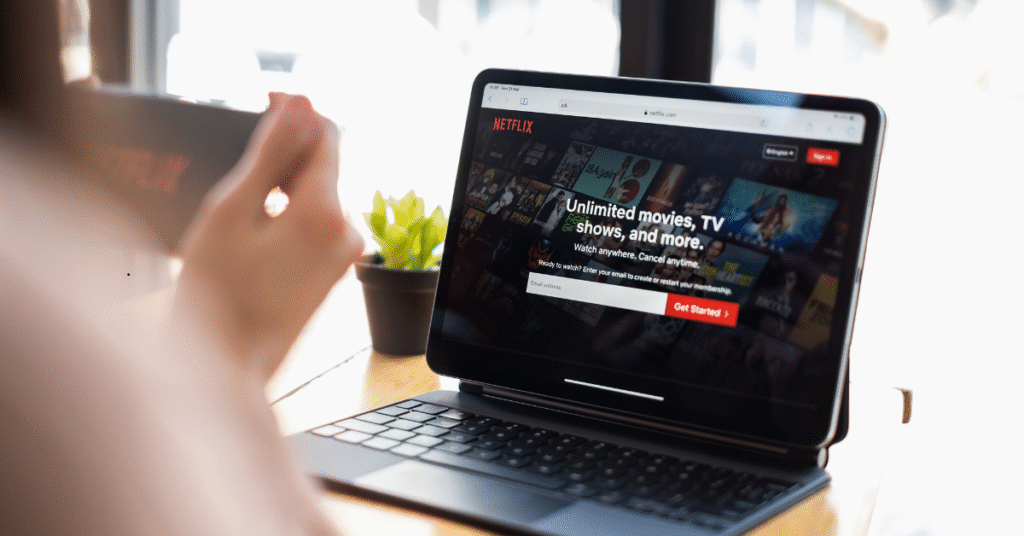
Quick question: how many subscription services are you currently paying for? Can you list them all right now without checking your bank statement?
If you’re like most people, the answer is no. And that’s a problem because these forgotten subscriptions are slowly draining your bank account like a leak in a pipe. A little bit here, a little bit there, and suddenly you’re spending $200+ monthly on stuff you barely use.
The Subscription Creep Problem
Here’s how it happens. You sign up for a free trial of something. It’s great, so you keep it. Then you add another service. And another. Before you know it, you’ve got:
- Three streaming services ($45/month)
- A gym membership you haven’t used in six months ($50/month)
- That meditation app you forgot about ($15/month)
- Two cloud storage services ($20/month)
- A meal kit subscription you meant to cancel ($60/month)
That’s $190 monthly, or $2,280 yearly, on subscriptions you might not even be using regularly. Ouch.
How to Audit Your Subscriptions
Set aside an hour this weekend and do a complete audit. Here’s how:
- Check your bank and credit card statements for the past three months
- List every recurring charge you find, no matter how small
- Ask yourself honestly: Have I used this in the past month? Does it add significant value to my life?
- Cancel anything that doesn’t pass that test
I did this exercise last year and found I was paying for a software subscription I hadn’t used in over a year. That’s $300 I was literally throwing away. The cancellation took two minutes.
Tools That Can Help
If you want to make this easier, try these tools:
- Truebill (now Rocket Money) – Identifies subscriptions and can negotiate bills for you
- Trim – Analyzes spending and cancels subscriptions on your behalf
- Your bank’s app – Many now have features that categorize recurring payments
Pro tip: Set a calendar reminder to do this audit every six months. Subscriptions have a sneaky way of creeping back up.
7. Pay Down Credit Cards
Let’s talk about credit card debt. It’s probably the single biggest obstacle between you and financial freedom, and it’s costing you way more than you think.
Credit card interest rates are absolutely brutal. We’re talking 18% to 25% APR on average. That means if you’re carrying a $5,000 balance and only making minimum payments, you could end up paying $3,000+ in interest alone. You’re essentially buying everything twice.
Why Credit Card Debt is So Dangerous
Here’s what makes credit card debt particularly nasty: it compounds daily. Every single day you carry a balance, interest is calculated on your balance plus the previous day’s interest. It’s like a snowball rolling downhill, except this snowball is crushing your financial future.
Beyond the money aspect, credit card debt messes with your credit score, increases your stress levels, and limits your financial options. Want to buy a house? Good luck getting a good mortgage rate with maxed-out credit cards. Want to start a business? Investors and lenders will see that debt as a red flag.
Strategies to Pay It Down Fast
If you’re carrying credit card debt, here are your best options:
- Debt avalanche method: Pay minimums on everything except the card with the highest interest rate. Attack that one aggressively until it’s gone, then move to the next highest rate.
- Debt snowball method: Pay minimums on everything except the smallest balance. Kill that one first for a psychological win, then roll that payment into the next smallest debt.
- Balance transfer: Move your debt to a 0% APR balance transfer card (like those from Chase or Citi). This gives you 12-18 months to pay it down interest-free.
- Debt consolidation loan: Take out a personal loan at a lower interest rate to pay off all your cards at once.
My Personal Credit Card Rule
I use credit cards for the rewards and convenience, but I have one non-negotiable rule: I pay the full balance every single month. No exceptions. If I can’t afford to pay it off immediately, I don’t buy it on credit.
This keeps me from ever paying a penny in interest while still enjoying cash back rewards and purchase protections. It’s honestly one of the best financial habits I’ve ever developed.
8. Review Changes In Credit Card Terms And Conditions
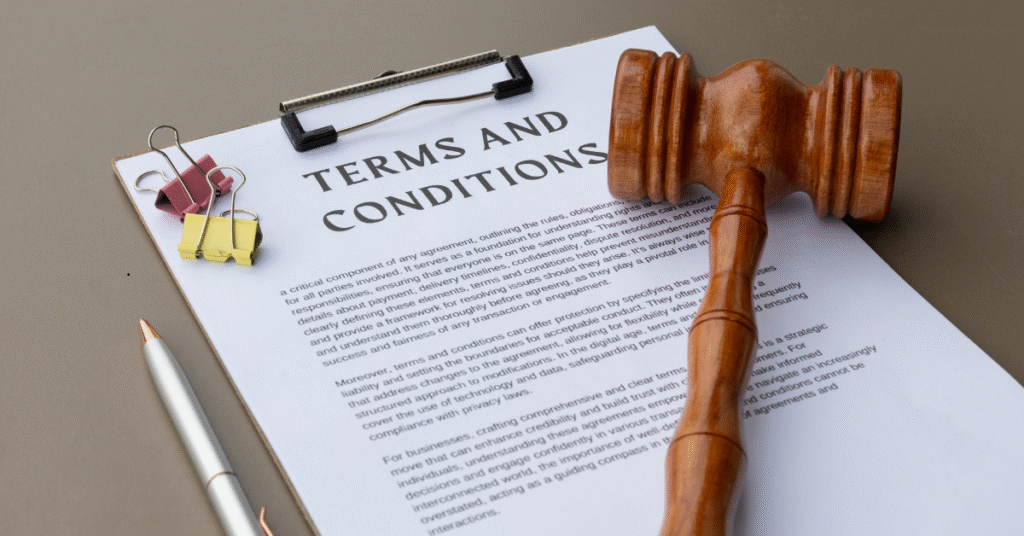
Real talk: when was the last time you actually read the terms and conditions for your credit cards? Yeah, I thought so. Most of us just click “I agree” and move on with our lives.
But here’s the thing: credit card companies can and do change their terms regularly. Interest rates go up, fees get added, rewards programs get modified. If you’re not paying attention, you could be agreeing to terms that cost you serious money.
What Changes to Watch For
Credit card issuers are required to notify you of significant changes, but let’s be honest, most people ignore those emails or throw away those notices without reading them. Here’s what you should be watching for:
- Interest rate increases: Your APR can jump due to market conditions or your payment history
- New fees: Annual fees, foreign transaction fees, balance transfer fees
- Rewards program changes: Categories that earn rewards might change or get reduced
- Grace period modifications: The time you have to pay without interest might shrink
What to Do If Terms Change Unfavorably
If you receive a notice about changes you don’t like, you’ve got options. First, call your credit card company. Seriously. Sometimes they’ll make exceptions or offer you a better deal if you just ask.
If that doesn’t work, shop around for better cards. The credit card market is competitive, and there are always companies trying to win your business with better terms. Sites like NerdWallet or Credit Karma make it easy to compare offers.
Just remember: if you’re carrying a balance, focus on paying that down before worrying about rewards programs. A 2% cash back card doesn’t help you if you’re paying 20% interest.
9. Plan For Tax Changes Affecting Deductions And Credits
Taxes aren’t exactly the most exciting topic, but ignoring them is like leaving money on the table. And I don’t know about you, but I hate leaving money on the table.
Tax laws change frequently. Deductions get modified, credits get added or removed, and the rules around what you can and can’t claim shift from year to year. If you’re not staying informed, you could be paying more than you need to or missing out on valuable tax breaks.
Key Tax Changes to Monitor for 2026
While specific 2026 tax changes won’t be finalized until later, here are the types of changes you should always watch for:
- Standard deduction amounts: These typically increase slightly each year for inflation
- Tax bracket thresholds: The income levels for each bracket usually adjust annually
- Retirement contribution limits: 401(k) and IRA limits often increase
- Child tax credits: These have been particularly volatile in recent years
- Energy efficiency credits: Credits for solar panels, electric vehicles, etc.
Tax Strategies for Business Owners
If you run a business or have significant side hustle income, tax planning becomes even more critical. You’ve got way more opportunities to reduce your tax burden legally, but you also have more complexity to navigate.
Consider strategies like:
- Maximizing business expense deductions: Home office, equipment, travel, meals
- Retirement contributions: SEP-IRAs and Solo 401(k)s have much higher limits than regular retirement accounts
- Quarterly estimated payments: Avoid penalties by staying on top of these
- Hiring family members: Can provide legitimate tax benefits in some situations
FYI, I’m not a tax professional, and you shouldn’t treat this as tax advice. Work with a qualified CPA or tax advisor who understands your specific situation. The money you spend on professional tax help almost always pays for itself several times over.
10. Consider Debt Consolidation Strategies
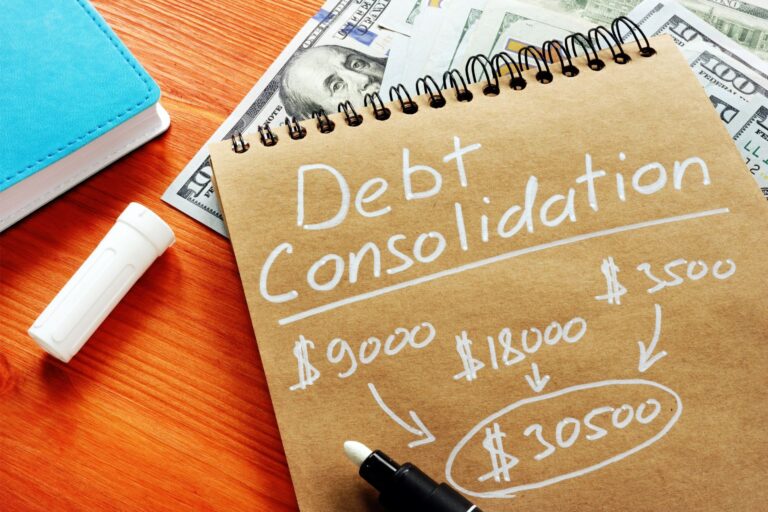
If you’re juggling multiple debts with different interest rates, payment dates, and minimum payments, debt consolidation might be one of the smart money moves that changes your financial life.
Debt consolidation means combining multiple debts into a single loan or payment. Done right, it can lower your interest rate, simplify your monthly payments, and help you get out of debt faster.
When Debt Consolidation Makes Sense
Consolidation isn’t right for everyone, but it can be a game-changer if:
- You have multiple high-interest debts (especially credit cards)
- You can qualify for a consolidation loan with a lower interest rate than your current average
- You’re struggling to keep track of multiple payment dates
- You have good enough credit to get approved for favorable terms
The key is that the new loan must have a lower interest rate than what you’re currently paying. Otherwise, you’re just rearranging deck chairs on the Titanic.
Debt Consolidation Options
Here are your main consolidation options:
- Personal consolidation loan: Take out one loan to pay off all your other debts. Companies like SoFi, LendingClub, or Marcus specialize in these.
- Balance transfer credit card: Move all your credit card debt to one card with a 0% intro APR period.
- Home equity loan or HELOC: Borrow against your home’s equity (risky, but can offer very low rates).
- 401(k) loan: Borrow from your retirement account (generally not recommended, but it’s an option).
The Consolidation Trap to Avoid
Here’s the biggest mistake people make with debt consolidation: they consolidate their debt, then immediately start racking up new debt on their now-empty credit cards. Don’t do this. Seriously.
Consolidation only works if you change the behaviors that got you into debt in the first place. Otherwise, you’ll end up with your consolidation loan plus new credit card debt, and you’ll be in an even worse position than before.
11. Increase Your Emergency Fund
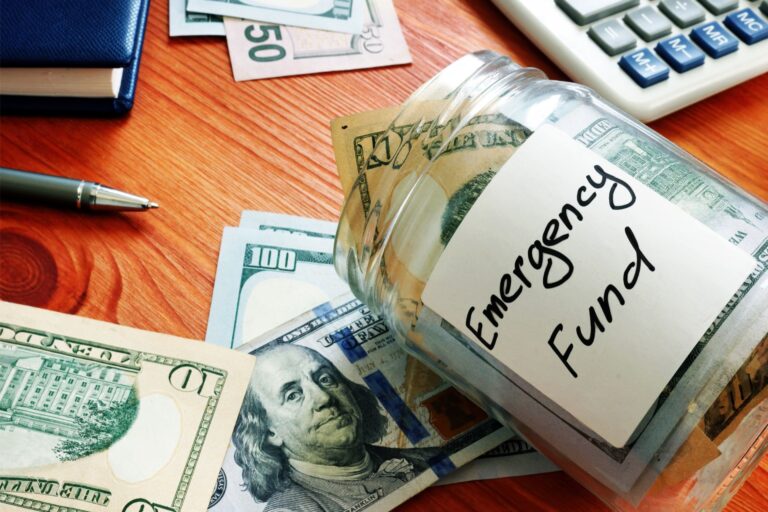
If 2020 taught us anything, it’s that unexpected stuff happens. Pandemics, job losses, medical emergencies, car breakdowns, surprise home repairs. Life has a way of throwing curveballs when you least expect them.
An emergency fund is your financial cushion that keeps these unexpected events from destroying your finances. It’s not about being pessimistic; it’s about being prepared.
How Much Should You Have?
The traditional advice is to save three to six months of expenses. That’s a solid target, but the right amount depends on your situation:
- Three months: If you have stable employment, dual income household, or strong job prospects
- Six months: If you’re single income, self-employed, or work in a volatile industry
- Nine to twelve months: If you’re the sole breadwinner, have dependents, or want extra peace of mind
Let’s do some math. If your monthly expenses are $4,000, a six-month emergency fund would be $24,000. That sounds like a lot (because it is), but remember, you don’t need to save it all overnight. Even starting with $1,000 puts you ahead of nearly half of Americans.
Where to Keep Your Emergency Fund
Your emergency fund should be easily accessible but not so accessible that you’re tempted to dip into it for non-emergencies. Here’s where it should NOT be:
- Not in stocks or investments (too volatile)
- Not in retirement accounts (penalties for early withdrawal)
- Not in your regular checking account (too tempting to spend)
The best place? A high-yield savings account that’s separate from your main checking account. Somewhere you can access the money within a day or two if needed, but not so convenient that you’ll use it for impulse purchases.
Building Your Fund Gradually
If you’re starting from zero, the goal of six months of expenses probably feels impossible. Break it down into smaller milestones:
- First goal: $500 (handles minor emergencies)
- Second goal: $1,000 (covers most unexpected expenses)
- Third goal: One month of expenses
- Fourth goal: Three months of expenses
- Final goal: Six months of expenses
Celebrate each milestone. Building an emergency fund is a huge accomplishment, and you should feel proud of every step forward.
12. Project Your 2026 Budget

Here’s a secret that successful people understand: planning beats reacting every single time. And nowhere is this more true than with your budget.
Most people wait until January 1st to think about their budget for the new year. By then, they’re already behind. Holiday spending has wrecked their finances, and they’re starting the year in catch-up mode.
Don’t be most people. Start planning your 2026 budget right now.
Why Early Budget Planning Works
When you create your budget ahead of time, you’re working from a position of calm and clarity rather than stress and desperation. You can think strategically about your goals instead of just reacting to whatever crisis is in front of you.
Plus, early planning gives you time to adjust. If your projected budget shows you’ll be $500 short each month, you’ve got time to find a solution.
Maybe you pick up extra shifts, start a side hustle, or identify expenses to cut. You’ve got options because you’re not in panic mode.
How to Create Your 2026 Budget
Here’s a simple process to build your budget:
- Calculate your expected income: Include salary, side hustle income, investment returns, etc.
- List your fixed expenses: Rent/mortgage, insurance, loan payments, subscriptions
- Estimate variable expenses: Groceries, gas, entertainment, dining out
- Set savings goals: Emergency fund, retirement, vacation fund, etc.
- Identify the gap: Does your income cover everything? If not, what needs to change?
Budget Tools That Actually Help
You don’t need fancy software to budget, but these tools can make it easier:
- YNAB (You Need A Budget): Excellent for zero-based budgeting
- Mint: Free and automatic, tracks spending for you
- EveryDollar: Simple interface, good for beginners
- Google Sheets or Excel: Free and completely customizable
I personally use a combination of YNAB for planning and Mint for tracking. The YNAB philosophy of giving every dollar a job has transformed how I think about money.
The Budget Review Habit
Creating a budget is step one. Actually following it requires regular reviews. I recommend checking your budget weekly at first (takes about 10 minutes), then moving to biweekly once you’ve got the hang of it.
During these reviews, ask yourself:
- Am I staying within my spending categories?
- Are there any unexpected expenses coming up?
- Do any categories need adjustment?
- Am I on track to hit my savings goals?
Think of these reviews as preventive maintenance for your finances. A little time invested regularly prevents major problems down the road.
Your 2026 Action Plan
Okay, we’ve covered a lot of ground here. Twelve smart money moves that can genuinely transform your financial situation. But here’s the thing: information without action is just entertainment.
You don’t need to implement all twelve moves tomorrow. That’s overwhelming and unsustainable. Instead, pick two or three that resonate most with your current situation and start there.
Your Next Steps
Here’s what I suggest you do right now, today:
- Choose your top three priorities from this list based on your current financial situation
- Schedule specific times to take action on each one (put it in your calendar)
- Set up accountability by telling someone about your goals or joining a financial community
- Track your progress monthly so you can see the improvements you’re making
Remember, personal finance is called “personal” for a reason. What works for me might not work exactly the same for you. Take these smart money moves and adapt them to fit your life, your goals, and your circumstances.
The Compound Effect of Smart Decisions
Here’s what gets me excited about these strategies: they compound over time. Each smart money move you make creates a foundation for the next one.
You start earning extra income, which helps you build your emergency fund faster. That emergency fund gives you the security to invest more aggressively. Those investments grow and eventually create passive income. That passive income gives you more freedom to pursue opportunities. See how it works?
The hardest part is starting. But once you build momentum, it gets easier. The smart money moves become habits, and habits become your new normal.
Final Thoughts
Look, I’m not going to promise you’ll become a millionaire by following these twelve smart money moves. That would be dishonest, and you deserve better than empty promises.
What I will promise is this: if you implement even half of these strategies consistently throughout 2026, your financial situation will improve significantly. You’ll have more savings, less debt, better credit, and most importantly, more peace of mind about money.
The difference between people who achieve financial success and those who struggle isn’t intelligence or luck. It’s consistent action on the fundamentals. It’s making smart decisions repeatedly over time, even when they’re not exciting or glamorous.
You’ve got the knowledge now. You know what smart money moves to make. The only question left is: will you actually do it?
2026 is coming whether you’re ready or not. You can either walk into it with a solid financial plan and smart strategies in place, or you can wing it and hope for the best. I know which option I’m choosing, and I hope you’ll join me.
Here’s to making 2026 your best financial year yet. You’ve got this!


